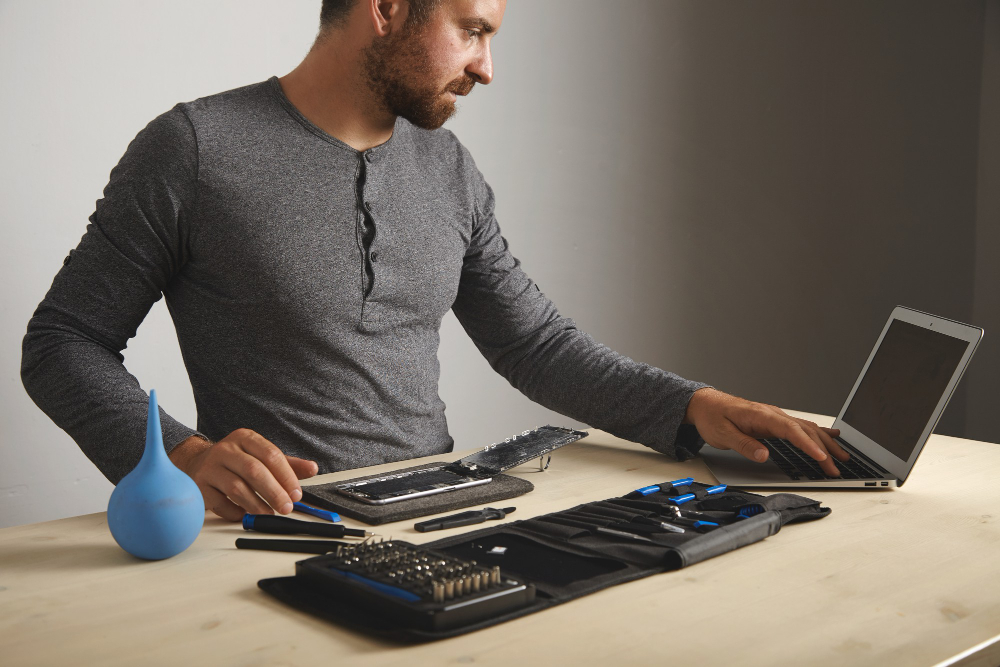In our fast-paced world, a laptop has become more than just a tool; it’s practically an extension of ourselves. But what happens when its battery—the lifeline that allows us to work, browse, and stream without the confines of a power outlet—begins to falter? Suddenly, you find yourself tethered to a wall, and your device’s portability becomes a distant memory. If you’ve encountered this issue, you’re not alone. Many people grapple with the unfortunate reality of a dying or “dead” laptop battery. But what if there were ways to revive it?
It’s important to note that while some methods can give your laptop battery a second wind, none are guaranteed. Laptop batteries, like all rechargeable batteries, have a finite lifespan and will eventually need replacement. Nevertheless, various techniques can potentially extend your battery’s life, and some might even bring it back from the brink of death.
In this article, we’ll explore the science behind laptop batteries, how to recognize the symptoms of a dead or dying battery, and various methods you can try to revive it. We’ll also delve into when it’s more practical to replace the battery altogether. Finally, we’ll share some tips on how to prolong the life of your newly revived or replaced battery. So let’s get started!
The Science Behind Laptop Batteries
Lithium-ion and Lithium-polymer Batteries
Most modern laptops use either Lithium-ion (Li-ion) or Lithium-polymer (LiPo) batteries. Both types have their pros and cons, but they share common principles. Li-ion batteries usually offer higher energy density, meaning they can store more energy in the same amount of space. LiPo batteries, on the other hand, are lighter and can be molded into various shapes, allowing for more design flexibility.
Battery Degradation Over Time
All rechargeable batteries degrade over time due to chemical changes within the cells. For a typical Li-ion battery, this process might result in a loss of about 20% of its capacity after 300 to 500 charge cycles. The “charge cycle” is a term used to describe the process of charging a battery from 0% to 100% and then discharging it back to 0%.
Recognizing the Symptoms of a Dead Laptop Battery
Warning Signs
A dying laptop battery will show some tell-tale signs before it completely fails. These include:
Drastically reduced run time.
Laptop shutting down or going to sleep unexpectedly, even when the battery shows some charge remaining.
Battery not charging beyond a certain percentage.
Diagnostic Tools
Both Windows and macOS offer built-in diagnostic tools to check the health of your battery. For Windows users, the “Battery Report” can be generated through the Command Prompt, providing detailed information on battery health. On macOS, the “System Information” utility provides a section specifically for power and battery status.
Common Reasons for Laptop Battery Failure
Overcharging
Constantly keeping your laptop plugged in, even when the battery is full, can generate excess heat, accelerating battery degradation.
Overheating
High operating temperatures can be lethal for batteries. Make sure your laptop’s cooling system is functional and keep it away from hot surfaces.
Age
Nothing lasts forever, including laptop batteries. After a certain number of charge cycles, a battery’s performance will decline inevitably.
Preliminary Steps Before Reviving the Battery
Safety Measures
Before attempting any revival techniques, it’s crucial to take necessary safety precautions. Always disconnect your laptop from any power sources and remove the battery if possible. Work in a well-ventilated space and keep any liquids away from your workspace.
Backup and Data Protection
It’s always a good idea to backup essential data before fiddling with hardware or software settings. Use external drives or cloud storage solutions to safeguard your important files.
Techniques to Revive a Dead Laptop Battery
Software Calibration
Software calibration is often the first step in reviving a battery and can be done without specialized tools. To calibrate:
- Fully charge your laptop battery.
- Disconnect the charger and let the laptop run until it shuts down due to low battery.
- Let it sit for about 4-5 hours to ensure complete discharge.
- Recharge your battery to 100% without interruption.
Hardware Reset
For some laptop models, a hardware battery reset might be an option. This generally involves removing the battery, pressing and holding the laptop’s power button for a specified duration, and then reconnecting the battery. Consult your laptop’s manual for specific instructions.
Freezing Technique
While more controversial, some claim that freezing a laptop battery can help revive it. If you opt for this method, ensure the battery is in a sealed plastic bag to avoid moisture damage. Freeze it for about 12-15 hours, then let it return to room temperature before reinserting it into the laptop and charging it fully.
When to Consider Replacement
Cost-benefit Analysis
If the above techniques do not work or offer only short-term solutions, consider the costs of continued attempts to revive the battery versus simply replacing it.
Compatibility
When opting for a new battery, ensure it’s compatible with your laptop model. Authentic batteries are often the safest bet, but reputable third-party options can be cost-effective alternatives.
Maintenance Tips for Prolonging Battery Life
- Use your laptop in optimal temperature conditions, ideally between 50 and 95°F (10 and 35°C).
- Employ the 40-80 rule: Try to keep your battery charge between 40% and 80% to prolong its lifespan.
- Regularly update your software, as manufacturers often release optimizations that can improve battery life.
Conclusion
Reviving a dead laptop battery can be a challenging yet rewarding process. While there’s no guarantee of success, the methods outlined here offer a fighting chance. However, it’s essential to recognize when it’s time to move on and invest in a new battery. By understanding the science behind laptop batteries and adhering to maintenance best practices, you can extend the life of your future batteries and get the most out of your laptop.
Frequently Asked Questions (FAQs)
Q: How many charge cycles can a typical laptop battery withstand?
A: Most laptop batteries can withstand between 300 to 500 charge cycles before experiencing significant capacity loss.
Q: Is it bad to leave my laptop plugged in all the time?
A: Constantly keeping your laptop plugged in can generate excess heat, which may accelerate battery degradation.
Q: Can I replace my laptop battery myself?
A: While it is possible to replace the battery yourself, consult your laptop’s manual and follow safety precautions. In some cases, it’s best to have it professionally replaced.
Q: What is the 40-80 rule?
A: The 40-80 rule suggests keeping your laptop battery charge between 40% and 80% to prolong its lifespan.
Q: Can software updates improve battery life?
A: Software updates from manufacturers can include optimizations that may improve battery performance and lifespan.




